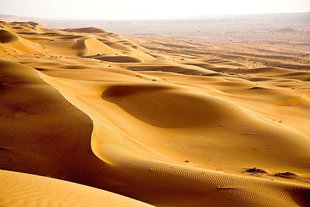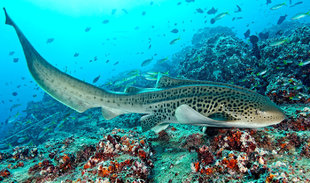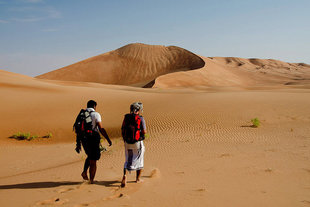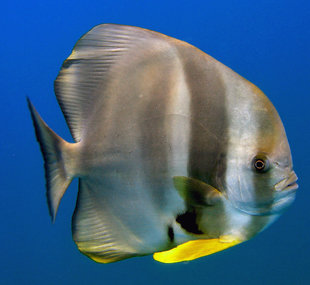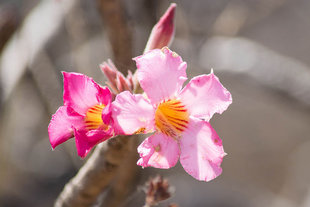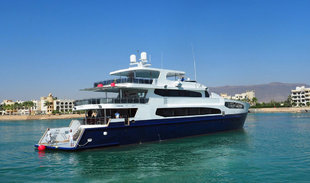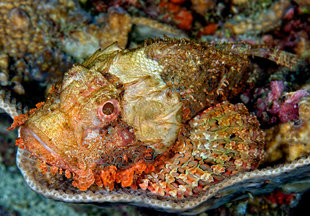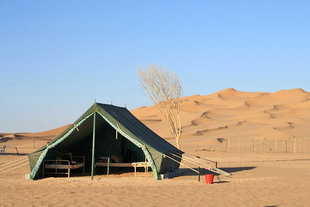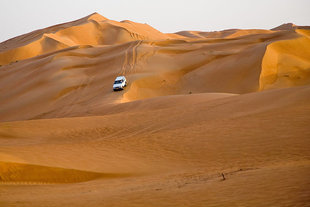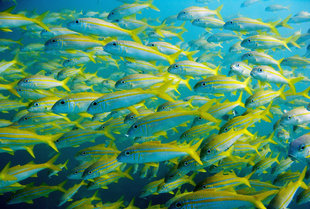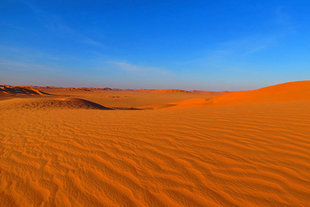Oman is one of the most peaceful and varied parts of the Arabian Peninsula to travel to, whose rich coastal waters, dramatic mountains and vast desert areas remain little known and largely unexplored. In addition to a sea of sands at Wahiba and the Empty Quarter Desert which borders Saudi Arabia, Oman possesses some surprisingly lush coastal mountains rising from the Indian Ocean at Salalah. Beyond coconut groves and woodlands of Frankincense, there is a mountain wilderness in this region which provides a home for the rare Arabian Leopard, hyena, wolf, ibex and Arabian Oryx. Sparsely populated, it is one of the main refuges for these species in the region.
Omani waters are some of the richest in the Indian Ocean region. Plankton rich waters provide ideal conditions for much larger numbers of fish than typical clear coral reef environments can provide for. It also enables an Arabian population of Humpback Whales to remain in Oman's coastal waters year round. This is only known population of Humpback Whales known to exhibit this behaviour, providing regular sightings for divers and snorkelers, along with frequent sightings of dolphins. These same plankton rich waters also attract other ocean giants, including devil rays, manta rays, the odd whale shark and turtles which include greens, hawksbill and olive ridley species.
For snorkelers and divers alike, there are some excellent coral reefs in these waters. For occasional diving, a land based diving holiday is good; whilst liveaboard scuba diving is ideal for reaching the best marine areas of the Hallaniyat Islands in the south west & Daymaniyats in the north east. The three marine life areas we focus on are:
Salalah & Mirbat and the Hallaniyat Islands Set against rugged south coast, Salalah is an access point to remote Hallaniyat Islands. These islands receive far fewer divers than Red Sea reefs so there is a huge amount to explore without another liveaboard boat in sight. Humpback whales are regularly seen close to the islands and the diverse reefs, seasonal kelp beds and marine topography are a wonderful backdrop to healthy schools of fish.
The Musandam Peninsula lies at the entrance to the Persian Gulf and Straits of Hormuz. This area offers the most dramatic coastline in Oman with high cliffs, peninsulas and bays looking like they've been transplanted from Norwegian Fjords to Arabia. This fractured landscape looks as though it has been formed by glaciers, but its origins are huge geological upheavals in the Peninsula's past. Diving here provides opportunities to enjoy a wide range of exciting drift dives, steep rock walls and encounters with pelagic species.
Sea kayaking is tremendous in this area, alternating between deserted cliff coastlines and remote fishing communities, cut off by a backdrop of steep coastal mountains.
Daymaniyat and Fahal Islands. Diving around Muscat, Oman's capital offers colourful coral reefs and walls with abundant fish life around the Daymaniyat and Fahal islands. Many Pelagic species are attracted by deep water upwellings. Whale sharks, eagles rays, barracuda and batfish are amongst the species to watch out for.
The Interior
The interior of Oman is best explored by 4 wheel drive and camel. Amongst the mountains you can find peaceful mountain communities and beautiful towns such as Nizwa, whose ancient fortresses date back to days when Omani sailing dhows kept the slave trade flowing from Zanzibar to Arabia. Beyond the lush hills behind Salalah, you can eventually reach the legendary sand dunes of the vast Empty Quarter Desert. For one of the most epic desert journeys you can imagine by 4 Wheel Drive, our 8 day Omani Desert Crossing takes you from Muscat to the green city of Salalah, travelling through the Empty Quarter Desert, Wahiba Sands and mountainous coastline in between.

